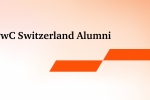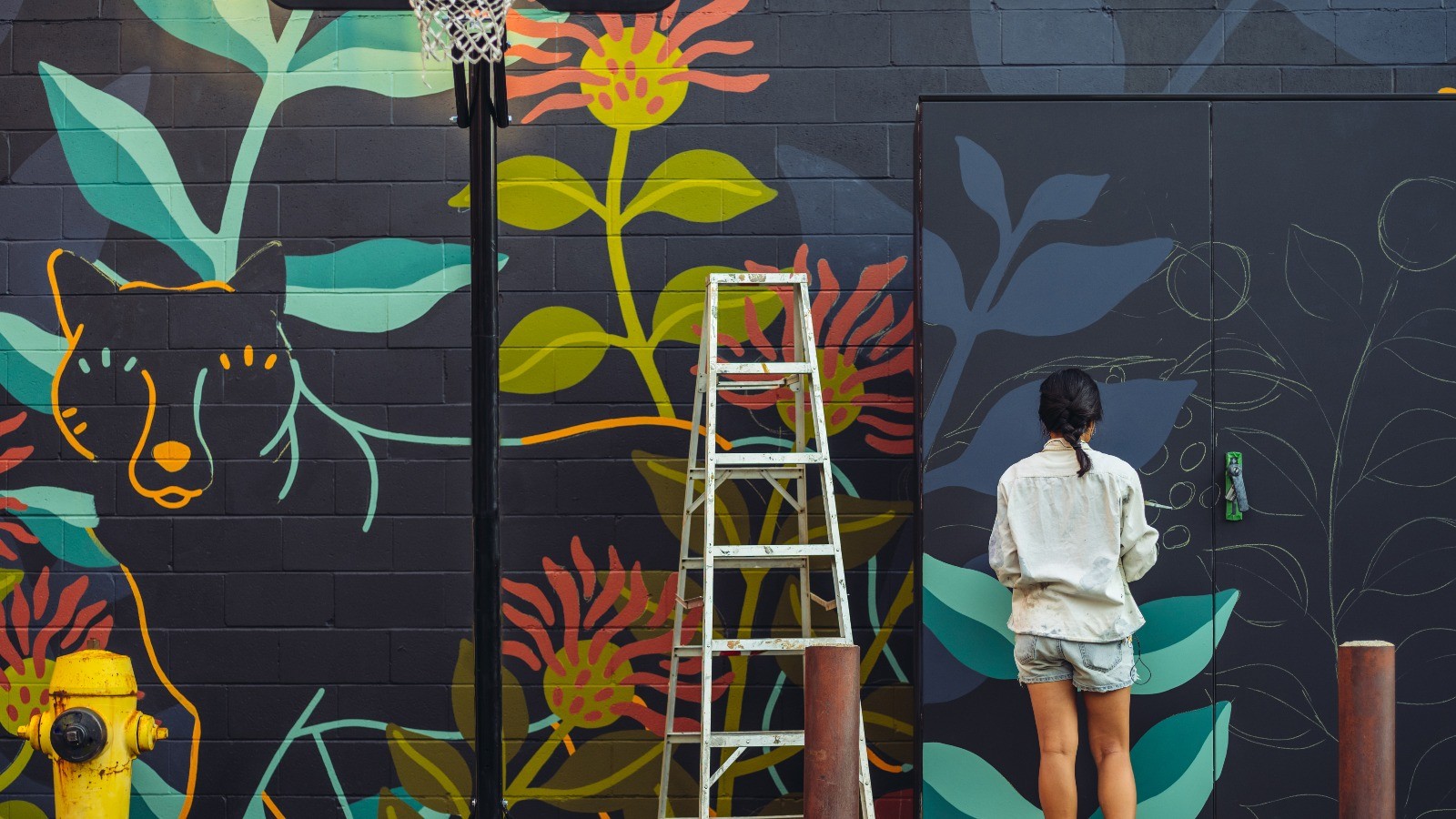The art world went through a transformation with the advent of tokenisation, a process that leverages blockchain technology to create digital representations of physical artworks. This approach changed the way how art can be owned, traded and appreciated. By converting masterpieces into digital tokens, tokenisation democratises access to high-value art, allowing a broader range of investors to own fractional shares of iconic pieces. This not only enhances liquidity and transparency in the art market, but also opens up new avenues for artists to monetise their work and reach global audiences. As tokenisation continues to gain traction it promises to reshape the landscape of art investment and ownership, making it more inclusive and dynamic.
PwC’s Women in STEM network has been curious about a critical view about how these opportunities have evolved over the last years, and used an organised art tour at one of the largest reinsurers to elaborate on what this means for the reinsurance industry.
On 27 June 2024, a total of 20 PwC colleagues with a STEM background toured the Swiss Re building in Zurich, discussing various topics related to craftmanship, the interpretation and impact of artworks and much more.
The Swiss Re Group is one of the world's leading providers of reinsurance, insurance and other forms of insurance-based risk transfer, working to make the world more resilient. It anticipates and manages risk – from natural catastrophes to climate change, and from ageing populations to cyber-crime. The aim of the Swiss Re Group is to enable society to thrive and progress, creating new opportunities and solutions for its clients. The Swiss Re Group is headquartered in Zurich, Switzerland, where it was founded in 1863, and operates through a network of around 80 offices around the world.
Swiss Re and art
The company also boasts an impressive art collection, and both art and architecture significantly contribute to Swiss Re's brand and identity. It includes a diverse array of artworks, including paintings, sculptures, photographs and site-specific installations. The extensive collection features work from both Swiss and international contemporary artists, emphasising commissioned pieces that resonate with Swiss Re's architectural spaces and corporate culture. By integrating art into its global offices, Swiss Re fosters a stimulating and inspiring work environment, promoting dialogue and creativity among employees and visitors alike. This approach not only enhances the aesthetic appeal of their spaces but also underscores the company's dedication to supporting local arts and enriching the cultural landscape.
By exploring the fascinating world of artists and art pieces at one of the largest reinsurers in the world, as women in STEM we couldn't help but contemplate on the regulatory and security challenges and proven opportunities for revenue models and transparency of tokenisation in the past years.
Our PwC point of view:
Why tokenisation could matter for reinsurers
While still in its early stages, tokenisation in general (and not just in the art market) has the potential to transform various aspects of the reinsurance industry, opening up new opportunities for risk transfer and capital efficiency. The potential benefits include increased transparency and efficiency in risk transfer processes. Tokenisation of Insurance-Linked Securities (ILSs) or catastrophe bonds, for example, could streamline the issuance, trading and settlement of these instruments. Reinsurers could leverage blockchain technology to tokenise reinsurance contracts, enabling more granular risk transfer, easier portfolio management and improved access to alternative investments. Additionally, tokenisation may facilitate the creation of innovative risk-sharing mechanisms, allowing reinsurers to better manage their exposure and optimise capital utilisation.
From an underwriting perspective, these assets present both potential for unexpected losses and opportunities for new types of insurance coverage.
As the crypto asset sector grows, the insurability of these assets with new types of coverage becomes increasingly relevant. Digital assets cannot be insured against physical risks. However, insurers might consider offering coverage for the private keys that provide access to NFTs. Insurers could offer protection against loss or damage in the event of these keys being stored offline, in so-called ‘cold wallets’. Similarly, online accounts on crypto exchanges are susceptible to hacking, and insurers could provide cyber coverage for both the exchanges and the individuals trading on them.
A newer development in this space is the tokenisation of physical assets also known as real world assets, ranging from collectibles to real estate. As the tokenisation of items like artworks or luxury goods becomes more common, there will be a growing need for storage and maintenance at dedicated facilities. These facilities will require insurance coverage, and may face accumulation risks if too many valuable assets are stored in one location.
What are the potential challenges?
The most significant barriers to the widespread adoption of tokenised art are low maturity, regulatory uncertainties and complexities in underwriting. Below are some of the challenges that need to be considered:
Case study: a gateway to global recognition for African art
Tokenization reached African art and creates new opportunities for visibility and value. Success stories like Prince Jacon "Osinachi" Igwe (Nigeria) and Lady Skollie (South Africa) illustrate the power of NFTs. Osinachi’s work, tackling themes of identity, has sold for up to five digit sums at global auctions like Sotheby’s or Christie's. By bridging tradition with technology, NFTs offer African artists a global stage to showcase their work and secure financial independence:
- Global reach: NFTs eliminate geographic barriers, connecting artists with international collectors
- Fair earnings: Blockchain sales allow artists to earn directly, including royalties on resales
- Cultural recognition: Tokenized art celebrates Africa’s rich heritage and contemporary innovation at the same time
A movement gaining momentum
By embracing NFTs, artists around the globe can transform their creative landscapes, achieving the global recognition they deserve while maintaining their cultural essence.
An outlook
The future of tokenisation in art is not just a technological advancement, it is a profound transformation that promises to reshape the very fabric of the art market.
The promise of tokenisation is to democratise art and make ownership of it accessible to a global audience. No longer confined to the walls of exclusive galleries or the vaults of private collectors, art can now be owned and appreciated by many. Fractional ownership means that even the most iconic artworks can be divided into digital tokens, allowing art lovers from all walks of life to own a piece of history.
The transparency and security provided by blockchain technology are revolutionising the way art is bought and sold. Each transaction is recorded on an immutable ledger, ensuring that the provenance of every piece is clear and indisputable. This not only reduces the risk of fraud, but also builds a foundation of trust that is essential for a thriving art market. Collectors can buy with confidence, knowing that the authenticity and ownership history of their acquisitions are beyond reproach.
The future of tokenisation holds unprecedented opportunities for artists. No longer reliant solely on traditional galleries and auction houses, artists can now reach a global audience directly. They can tokenise their work, creating digital representations that can be sold and traded on innovative platforms. This opens up new revenue streams, allowing artists to benefit not just from the initial sale but also from secondary sales, thanks to smart contracts that ensure they receive royalties when their work changes hands.
Innovative platforms and marketplaces are emerging, providing artists and collectors with more options and flexibility. These platforms facilitate the buying, selling and trading of tokenised art, making the process seamless and accessible. As the market for tokenised art grows, regulatory frameworks will evolve to address issues related to ownership, taxation and intellectual property rights, ensuring a fair and transparent environment for all participants.
The future of tokenisation in art is full of potential, but has yet to reach a point of maturity for the mainstream public. It promises to reshape the art world, making it more inclusive, transparent and dynamic. The journey has begun, but there’s a long way to go with an extended business model for the vision to fully become reality.

Ever wondered what it would be like to own a famous piece of art?
Tokenisation in art allows you to do just that. Scan the QR code or click here to experience what tokenisation in art means, and what it has to do with the insurance and reinsurance world.
Please use your phone for this experience. Scan the code with your camera app, click the link and then click the Open with Adobe Aero app clip button. Find an open floor space near you and scan according to the instructions. Click the floor space again to place the 3D model. You’ll see our interactive experience appear directly on your phone.
Women in STEM
The integration of women in STEM represents a dynamic convergence of creativity and innovation. The inclusion of art in STE(A)M fosters a holistic approach to problem-solving and design, encouraging interdisciplinary collaboration.
PwC’s STEM Women Network highlights the importance of an inclusive work environment. We are dedicated to promoting the idea that women in STEM and art are crucial in inspiring future generations and achieving gender parity in these fields.
Contact us
Juliane Welz
Andrea Emersic
Lara Bollmann








